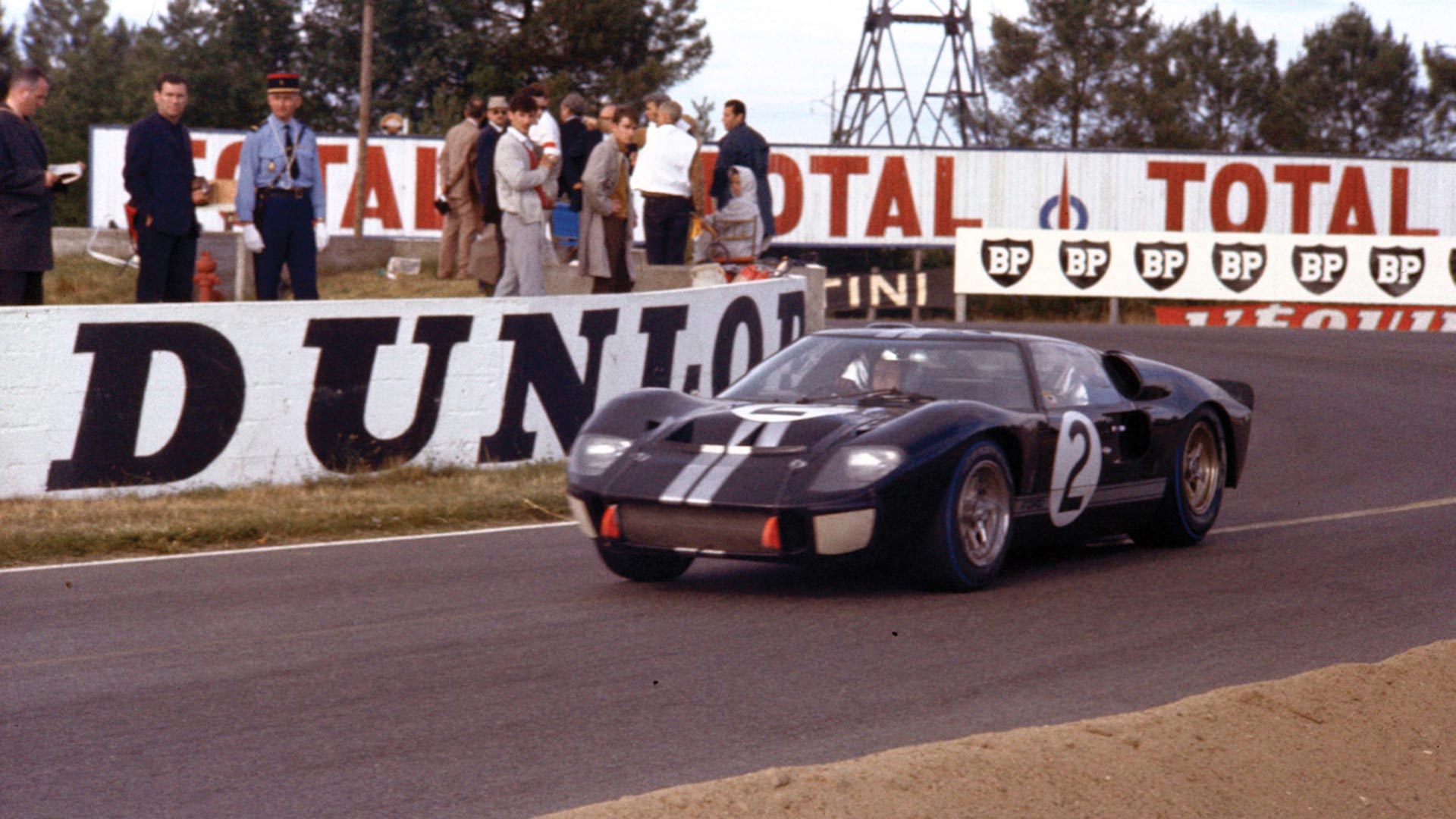
With Matt Damon and Christian Bale due to star in the upcoming ‘Ford v Ferrari’ feature film, we take a look at the on-track history that led to this famous feud. This is the tale of when Detroit fought Maranello at Le Mans.
The start of the ordeal
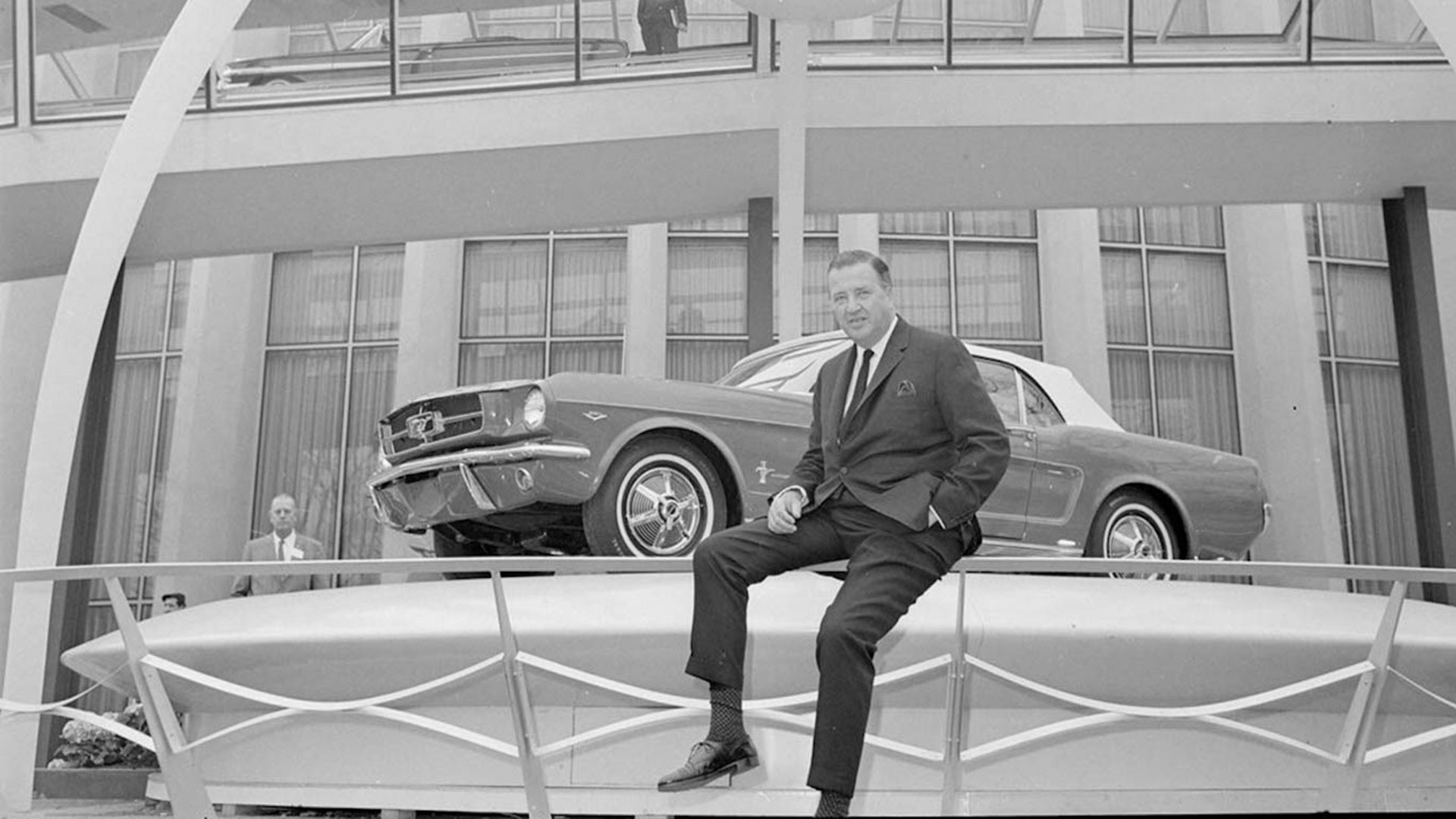
It counts as one of the most notorious stories in motorsport, and it all began due to a dispute between Henry Ford II and Enzo Ferrari.
Ford had looked to buy the Italian manufacturer during 1963, yet found Ferrari unwilling to step away from the Indianapolis 500. This would have placed the two brands in direct competition on track.
As a result, the deal failed. Henry Ford II then directed his company to enact revenge on Ferrari at Le Mans.
Ferrari was the class act to beat at Le Mans
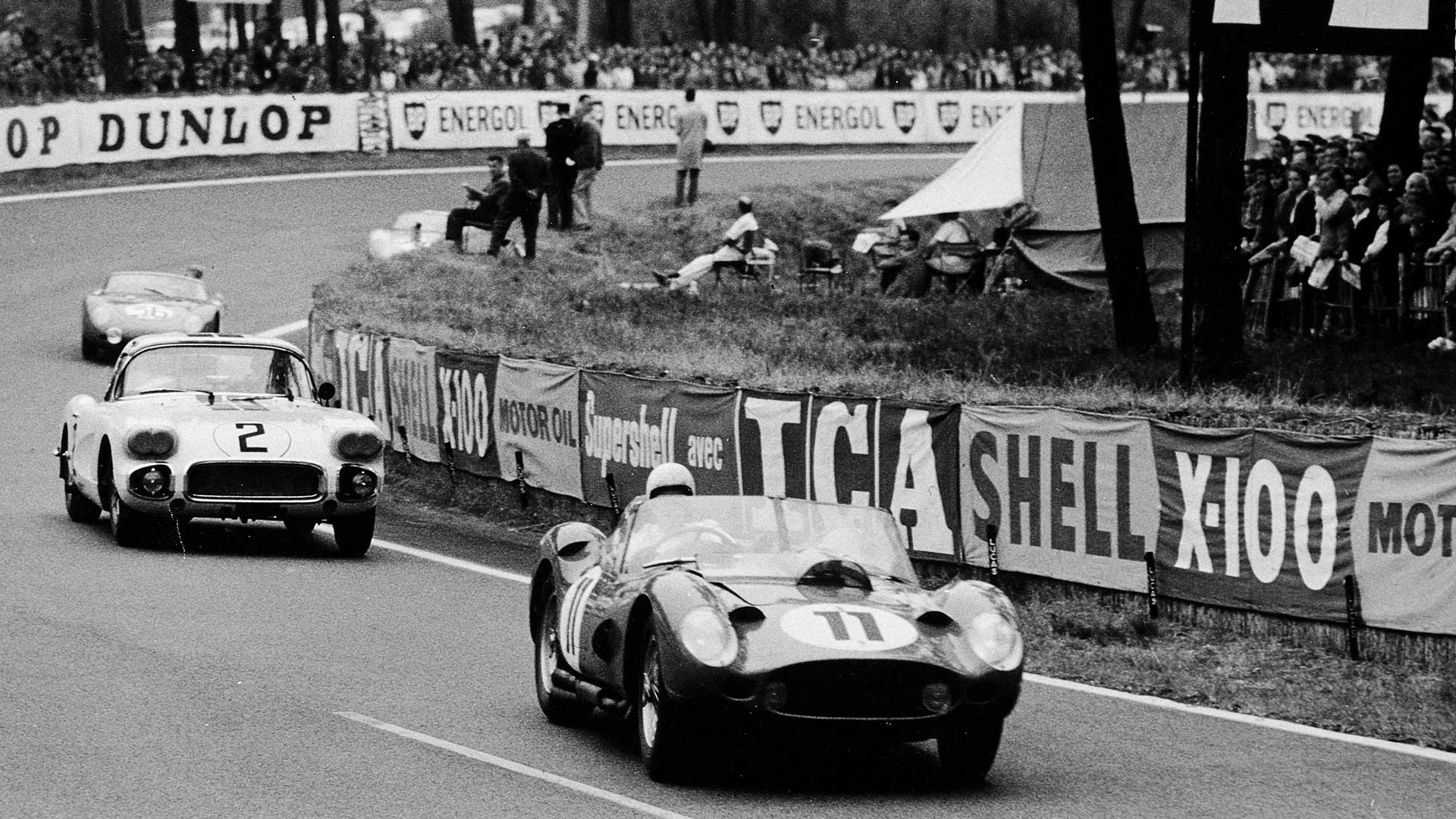
The Italian brand had established total dominance at Le Mans during the 1960s. Cars wearing the famous Prancing Horse badge had won every edition of the 24 hour race from 1960 onwards.
This included two victories taken by Belgian driver Oliver Gendebien, pictured here behind the wheel of a Ferrari 250 TR 59/60 on his way to glory in 1960. Beating the Scuderia was going to take serious commitment and engineering effort from Ford.
1964 Ford GT40 prototype
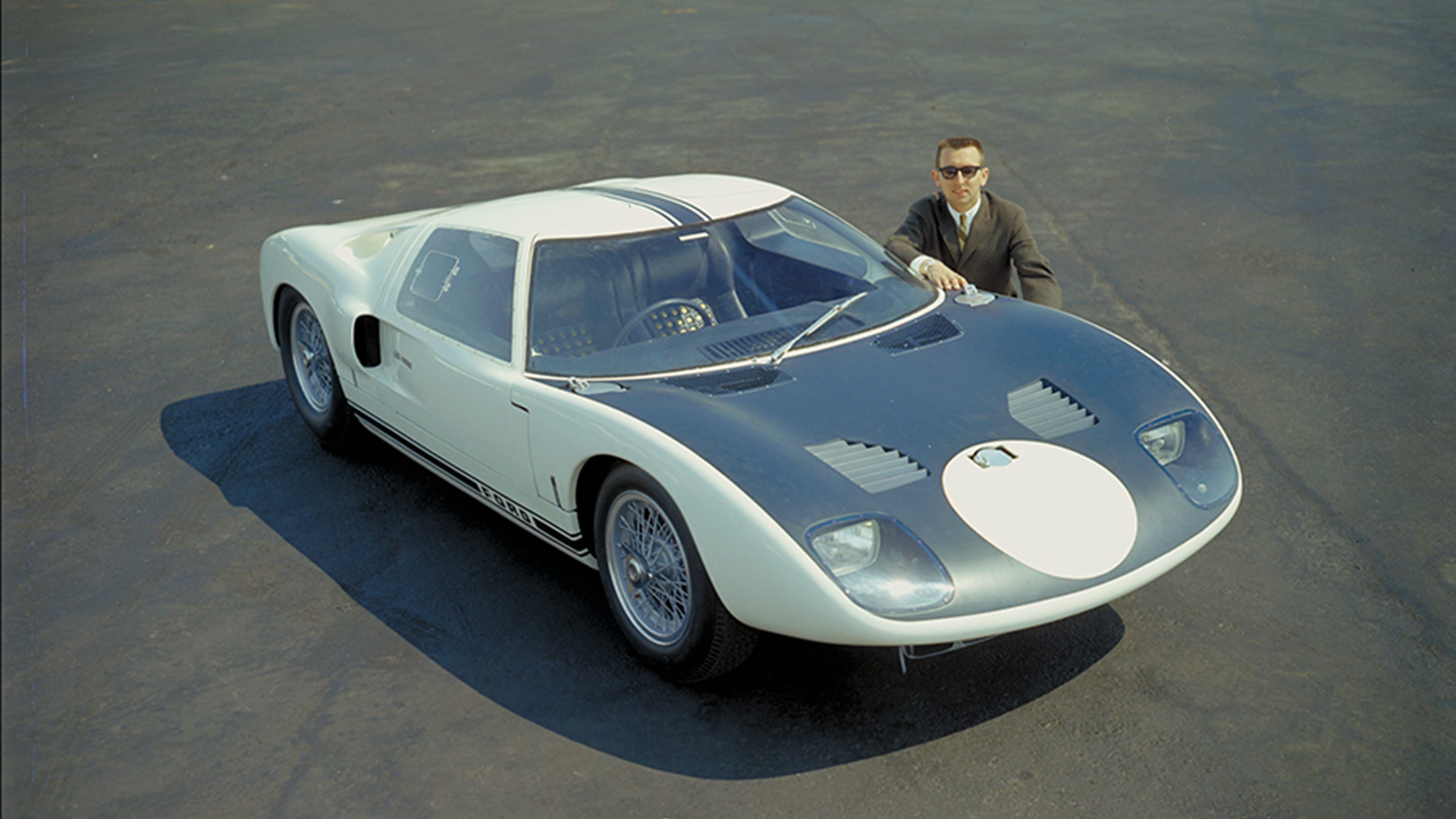
Ford initially courted Lola Cars, Lotus, and Cooper for a partner to build the new Le Mans racer. Lola was eventually chosen, partly because the Lola Mk 6 race car already made use of a Ford V8 engine.
Lola donated two Mk 6 chassis from its factory in Slough, while Ford set about creating a team to develop and build its new race machine.
1964 Ford GT40 prototype
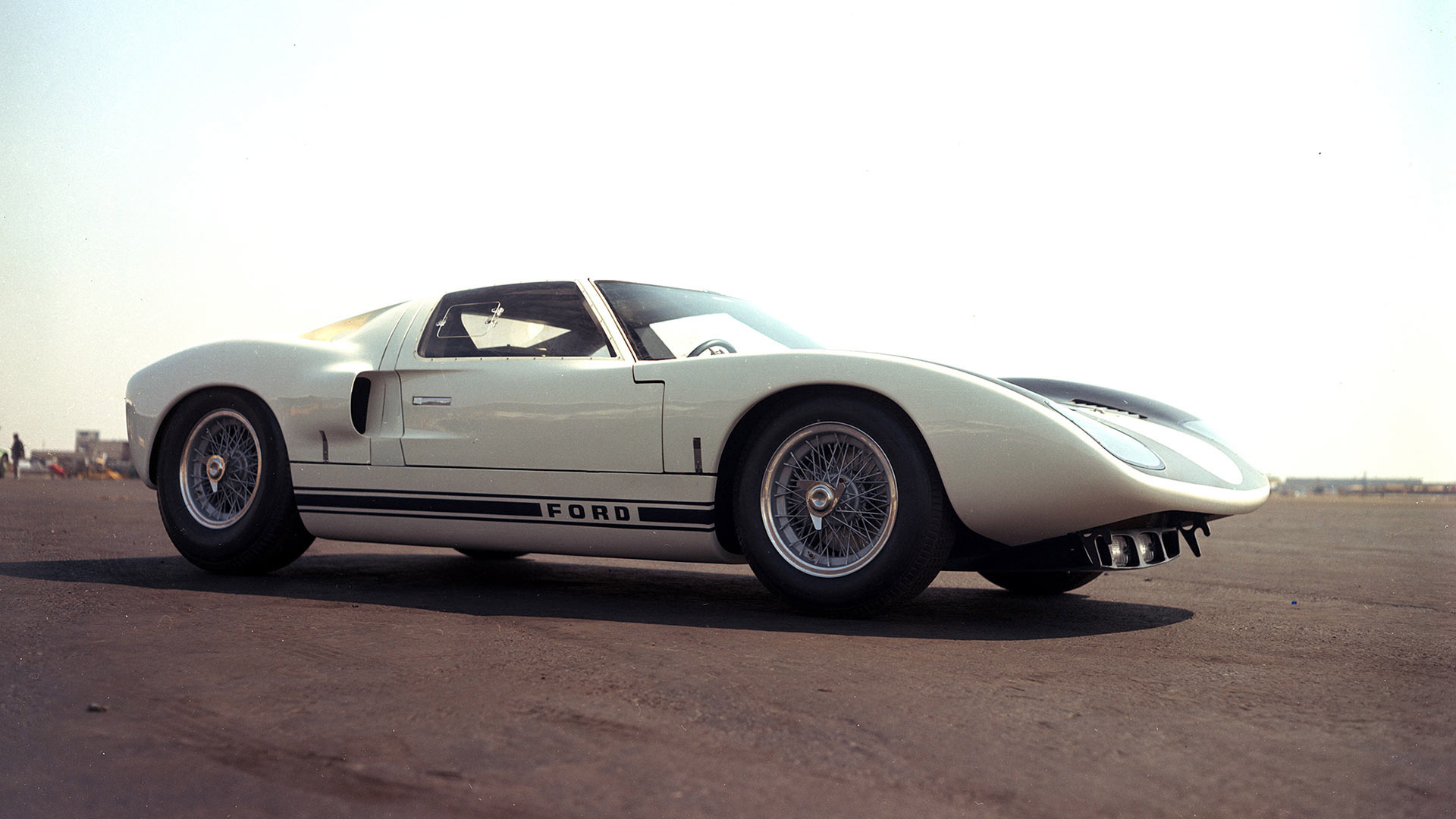
The newly created Ford Advanced Vehicles team set about the development of a new racer, based at its own British factory.
Early prototypes of the GT40 made use of a mid-mounted 255 cubic inch (4.2-litre) Ford V8, whilst later finished cars would feature a 289 cubic inch (4.7-litre) unit. Famously, the GT40 name came from the overall height of the new race car being just 40 inches.
Ford GT40 team transporters ready for the off
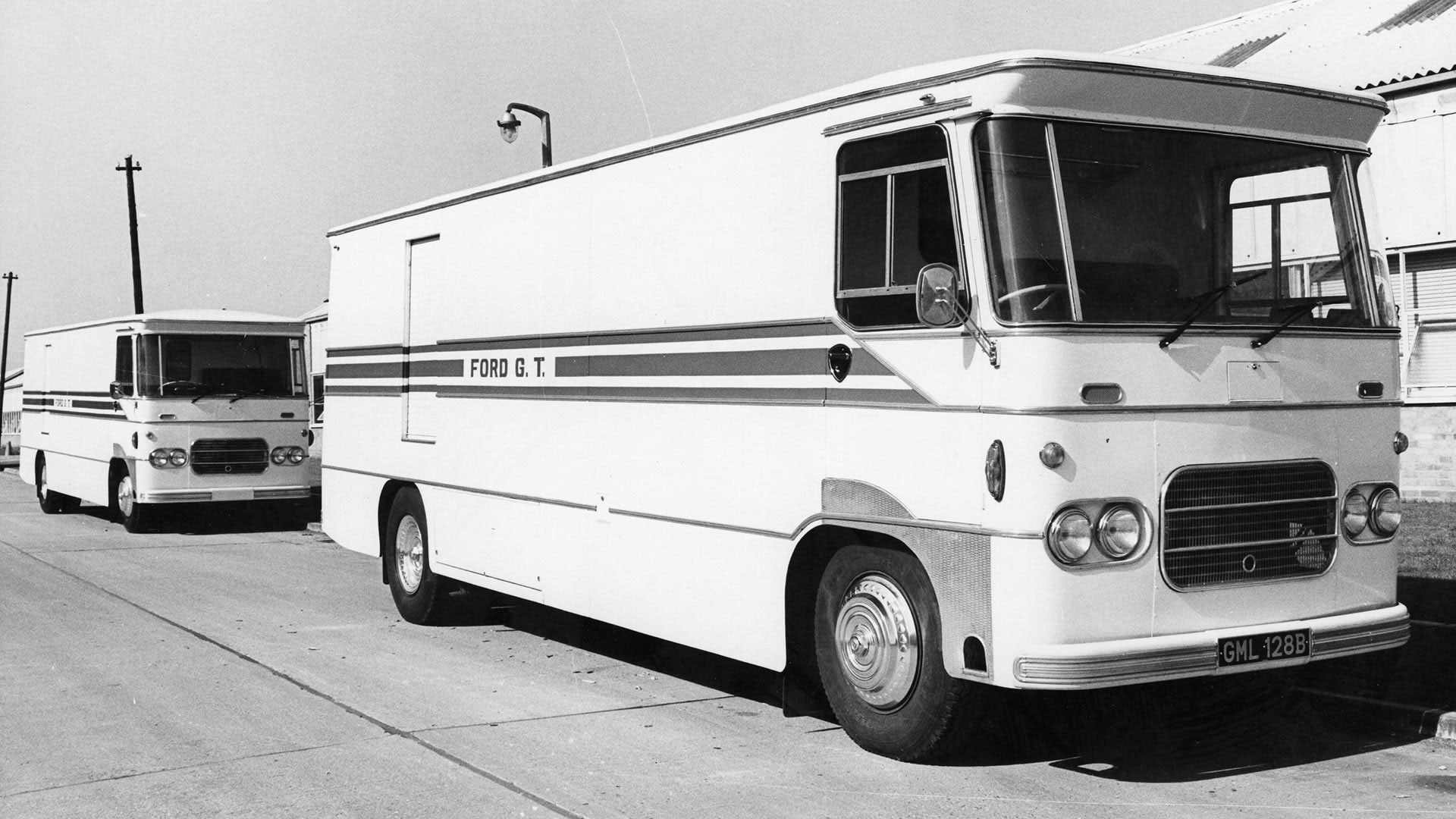
Ford had taken only seven months to create the new GT40, with the completed car being shown to journalists on April 1st 1964. John Wyer was put in charge of running the Ford Advanced Vehicles team for the year.
The rush to get the new cars finished meant the GT40 would miss the season-opening Sebring 12 Hours race. Instead, the inaugural use of the car in anger would be at the first Le Mans test, less than three weeks after the cars were presented to the media.
1964 becomes a year to quickly forget
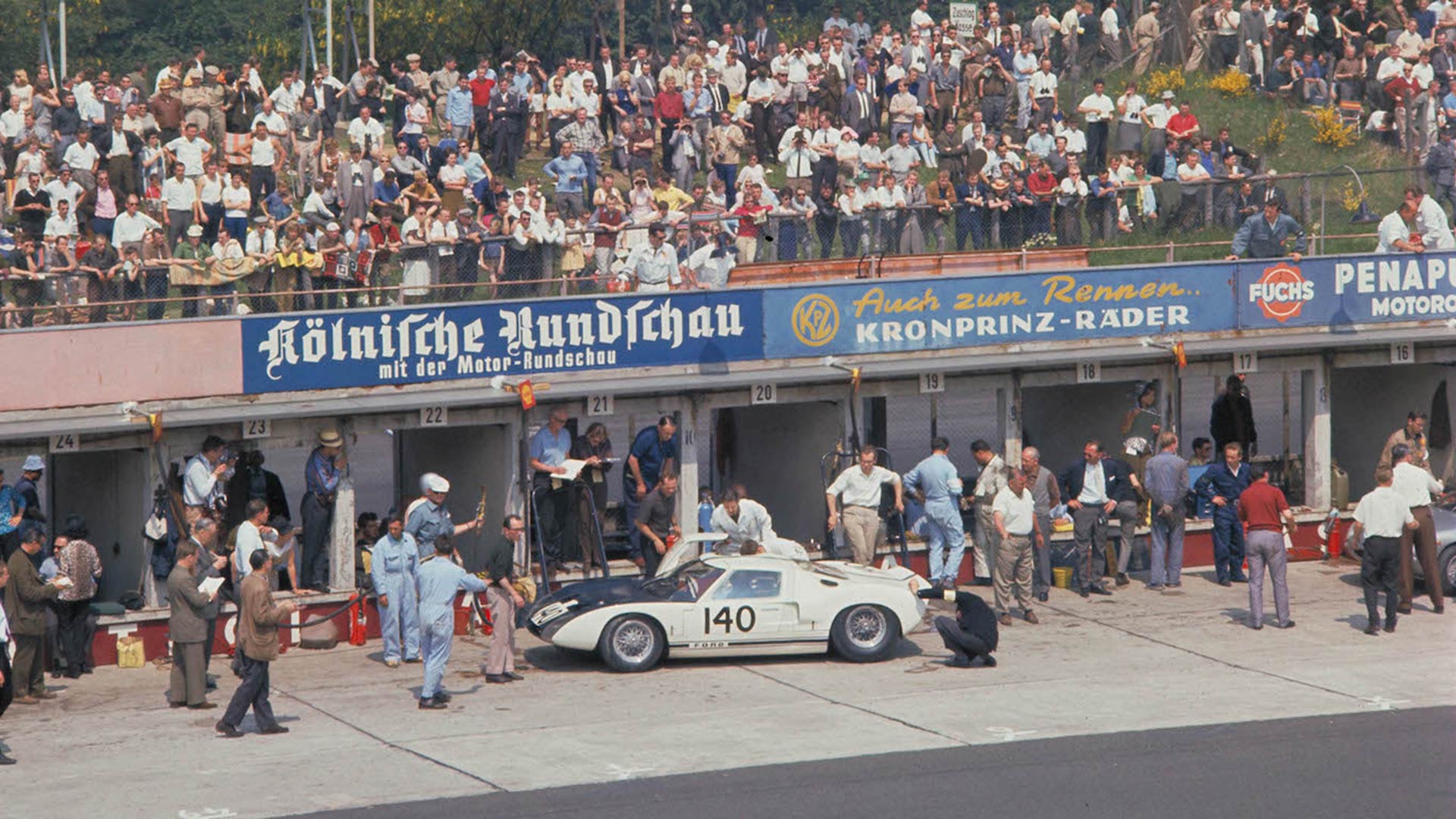
Making a race debut at the gruelling Nürburging 1,000km in 1964, the driver pairing of Phil Hill and Bruce McLaren managed to qualify second on the grid. However, a suspension failure meant the GT40 failed to finish the race.
This would set the tone for the year, with 1964 at Le Mans a dismal failure. All three of the Fords would retire with mechanical issues, while Ferrari clocked up another win.
1965 shows promising signs for the future
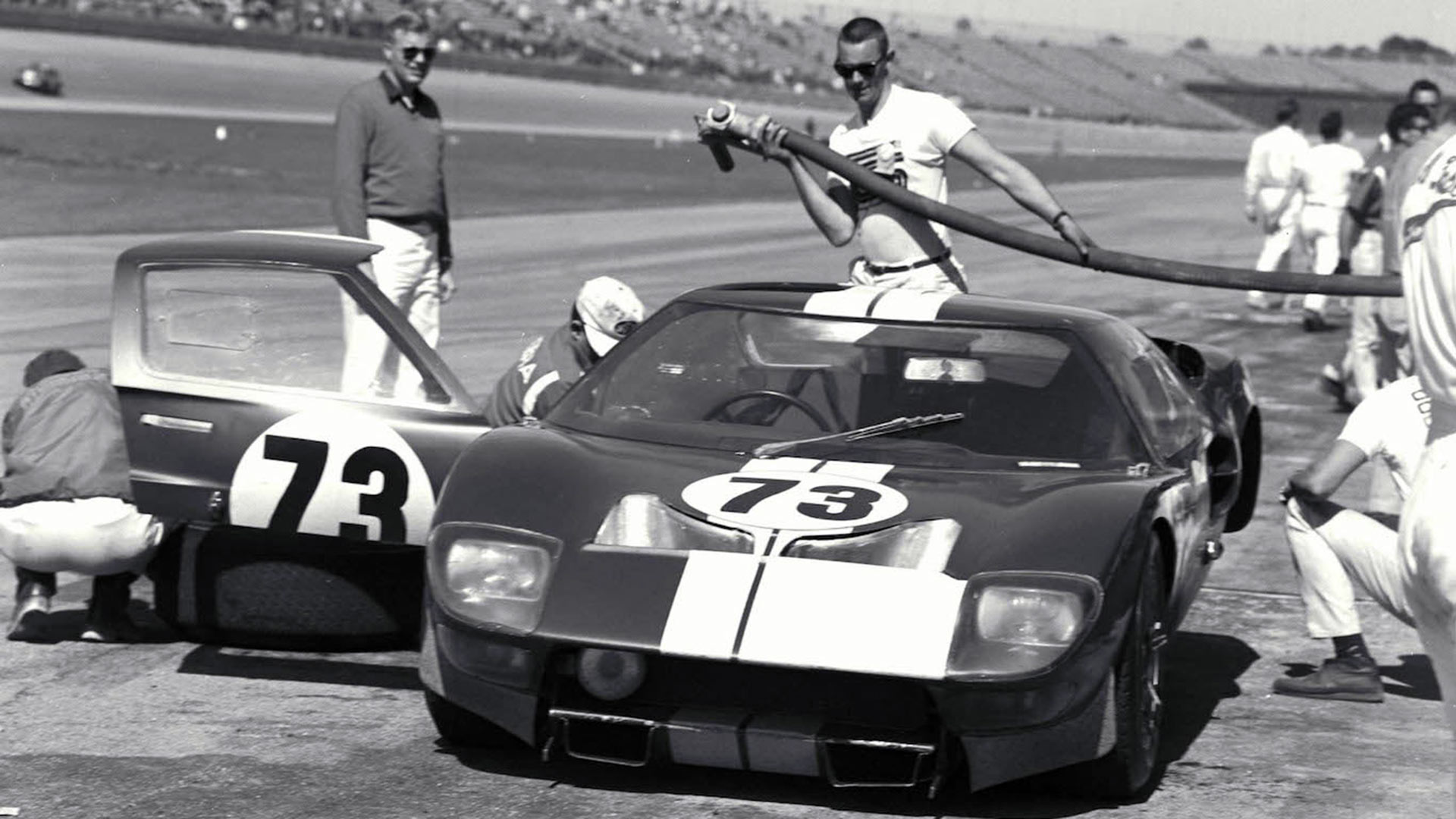
After the disappointment of 1964, Ford switched management of the GT40 to Carroll Shelby for 1965. This came after his notable successes with the Ford-powered Daytona Coupe.
Victory came immediately, with a win for Ken Miles and Lloyd Ruby at the Daytona 2,000km race, with Bob Bondurant and Richie Ginther taking third in a sister GT40.
Yet the remainder of 1965 would prove fruitless, with no more wins for Ford. Le Mans would again see all the GT40s fail to make the finish.
1966 Ford GT40 Mk I road car
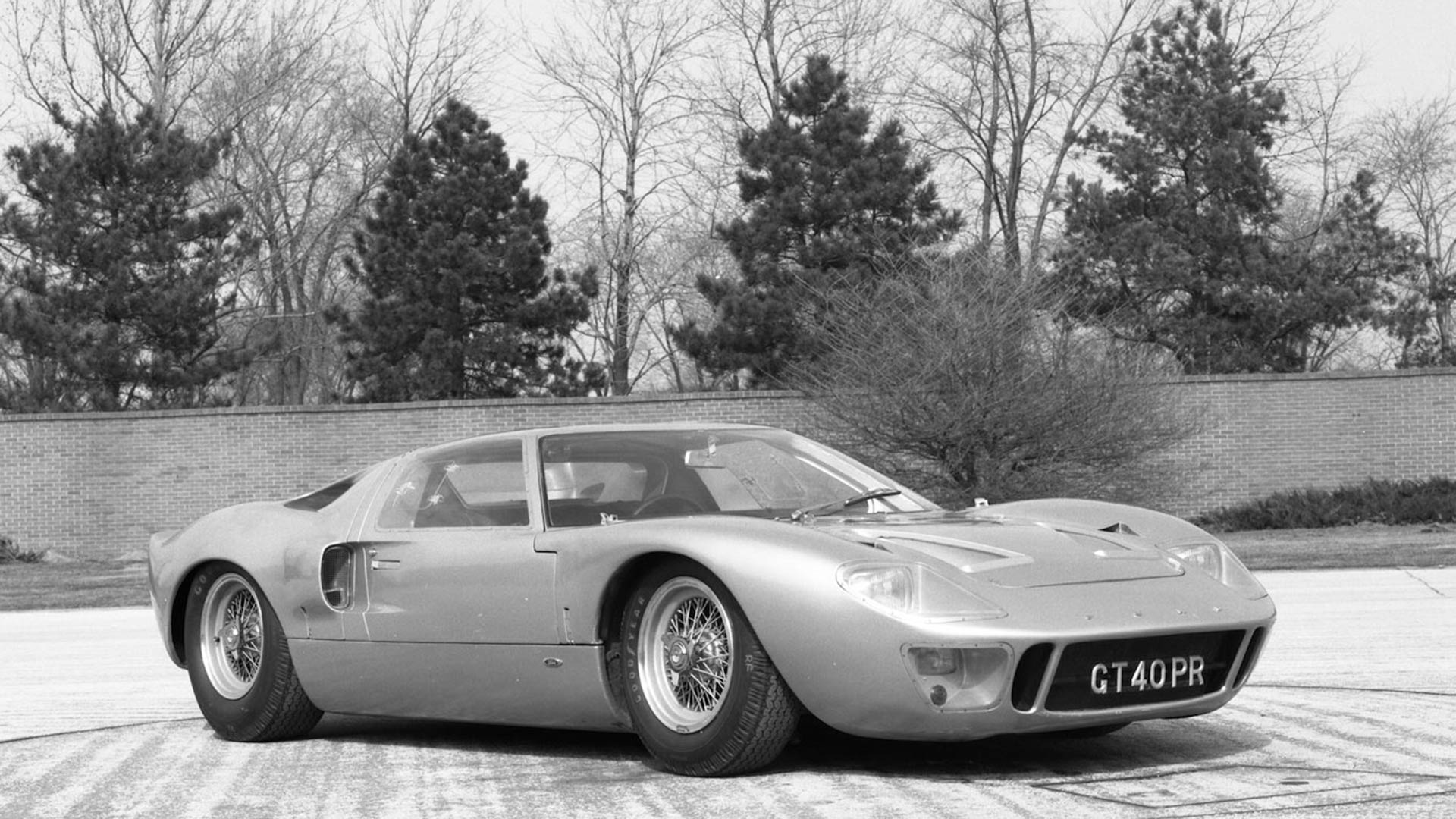
Whilst the early GT40s might not have proved to be successful on track, road car versions still rolled out of the factory, with the first example delivered to the United States in early 1966.
The Mk I road cars featured softer suspension, quieter exhausts, plus options such as air-conditioning and leather seats. However, they still featured a 335hp V8 engine.
A new hope: the 1966 Ford GT40 Mk II
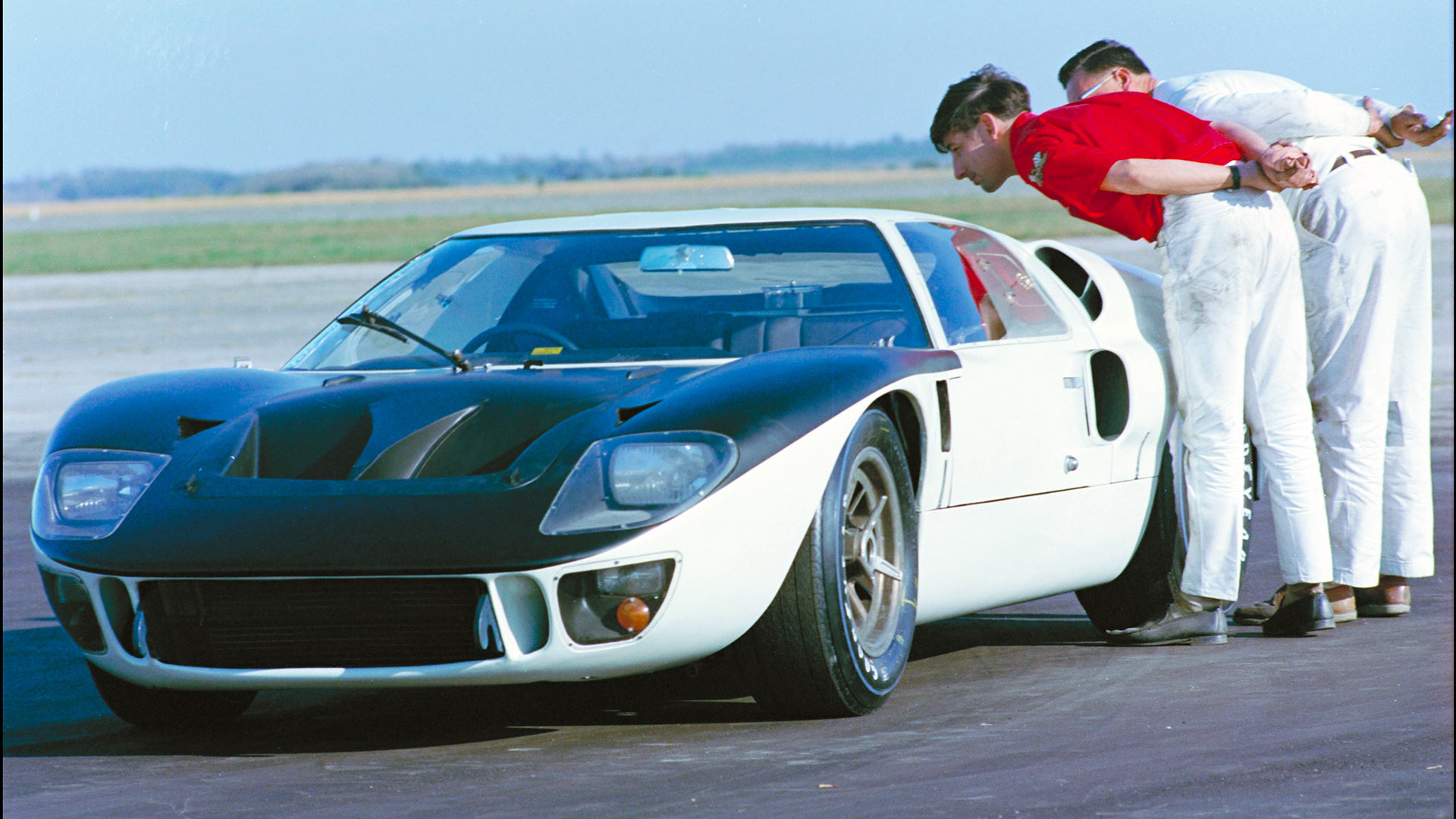
Whereas the Mk II may have looked similar to its predecessor, beneath the bodywork was a host of changes. In came a 427 cubic inch (7.0-litre) Ford FE engine, with an exhaust system nicknamed ‘a bundle of snakes’ for its elaborate design.
Kar-Kraft also modified the chassis from the original British-designed Mk I version, using higher strength steel. Extra robustness was added with upgraded suspension components, while a strengthened gearbox was also used. This featured just four speeds, instead of the five cogs found in the Mk I.
1966 Ford GT40 Mk II
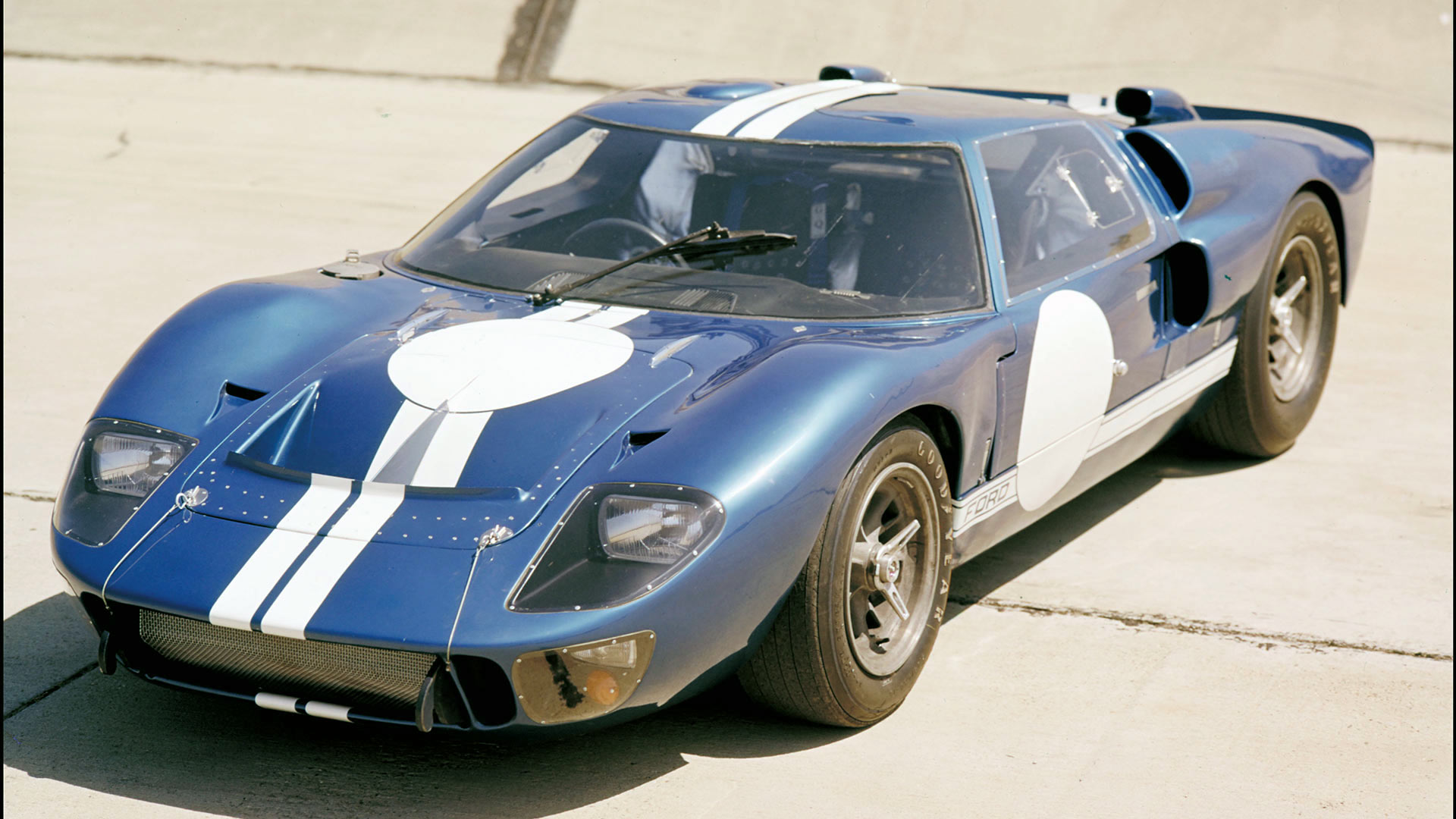
Ford also dismissed Carrol Shelby as overall manager for the GT40 programme. Instead, priority was given to the Holman-Moody outfit who were responsible for running Ford’s NASCAR efforts. Henry Ford II was adamant that the GT40 must win in 1966.
However, the Shelby American team did continue as an official factory outfit, retaining Ken Miles as one of their drivers. The new GT40s would finish 1-2-3-5 in the ’66 Daytona 24 Hours, proving the changes were right and setting Ford on the path to glory.
1966 Ford GT40 Mk II ‘X-1’ Roadster
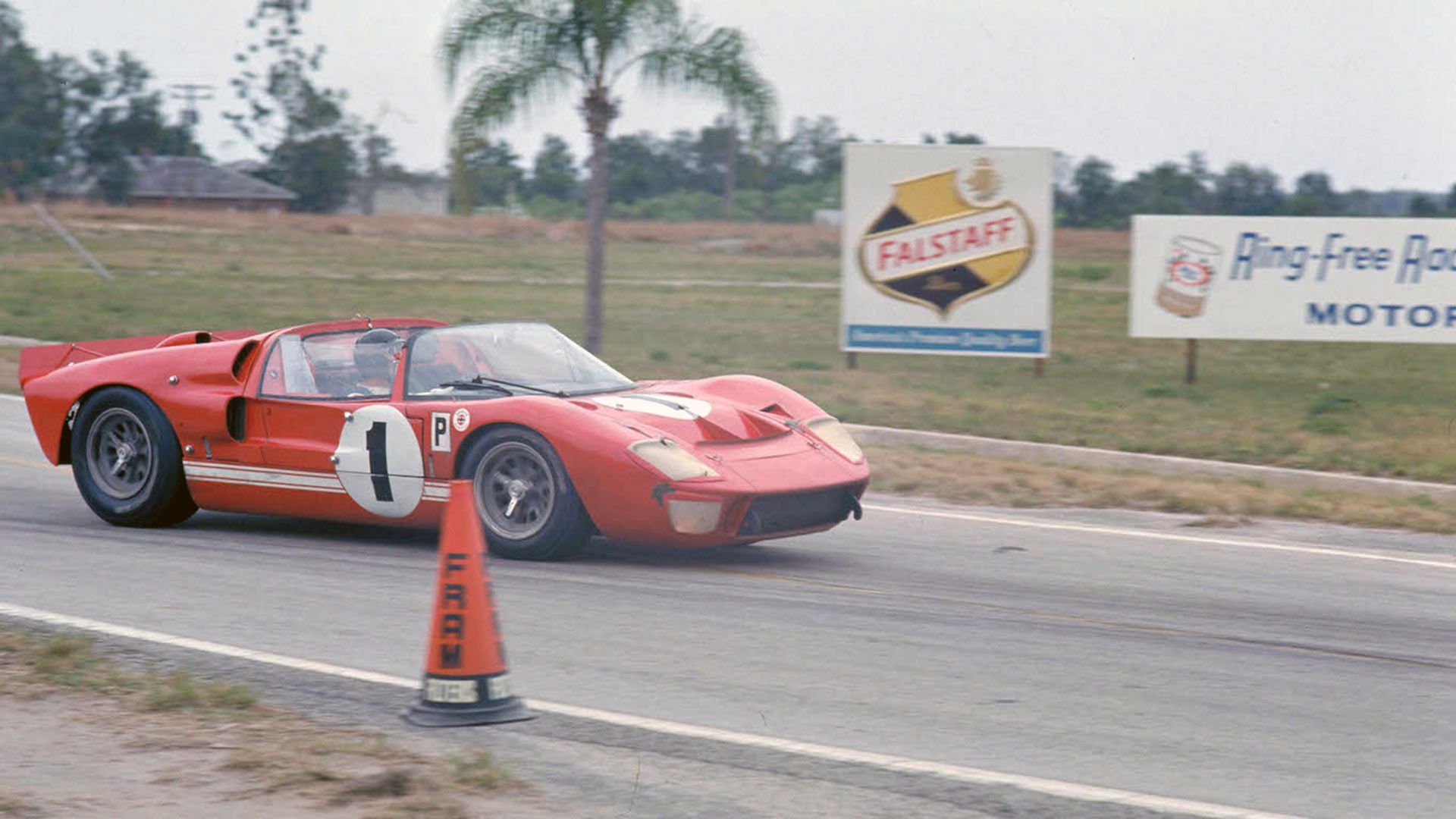
Ford also experimented with a potential for an open-top version of the GT40 during the 1966 season. Initially created for Bruce McLaren Racing in 1965 with a low-drag windscreen, on return to Ford the one-off roadster was updated to Mk II specification for Shelby American.
It’s only race event came at the 1966 12 Hours of Sebring where, after experimenting with automatic gearboxes during practice, a manual transmission was fitted for the race. When the engine of the lead GT40 Mk II seized, the ‘X-1’ Roadster of Miles and Ruby slipped through to victory.
1966 Ferrari 330 P3
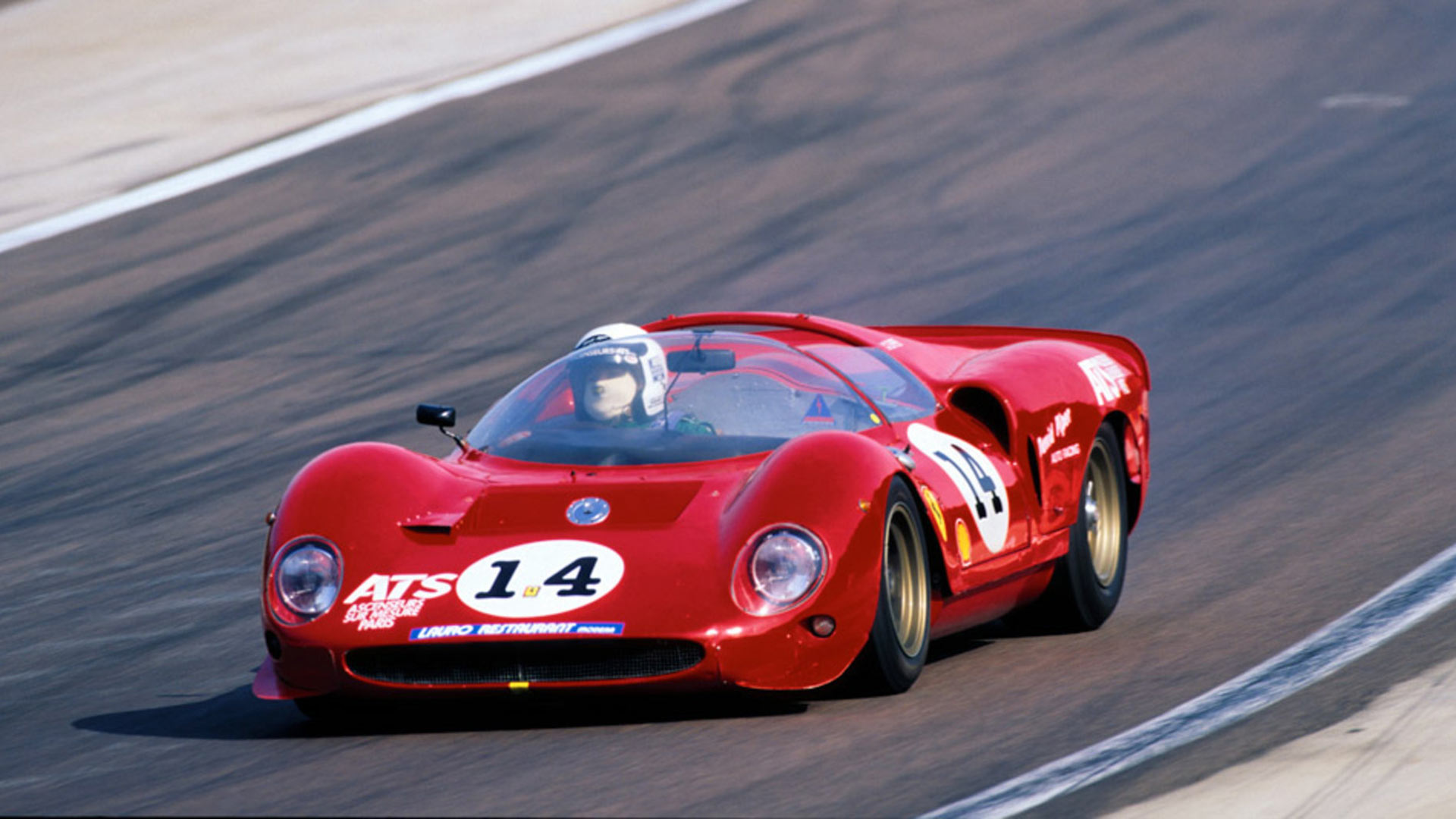
With all the attention now on winning the Le Mans 24 Hours, Ford would face tough competition at the 1966 race.
Ferrari had updated its line of prototype racers, creating the new 330 P3. Thanks to fuel injection it now had more horsepower, and was built in both closed- and open-cockpit versions for the epic endurance event.
1966 Porsche 906/6 LH
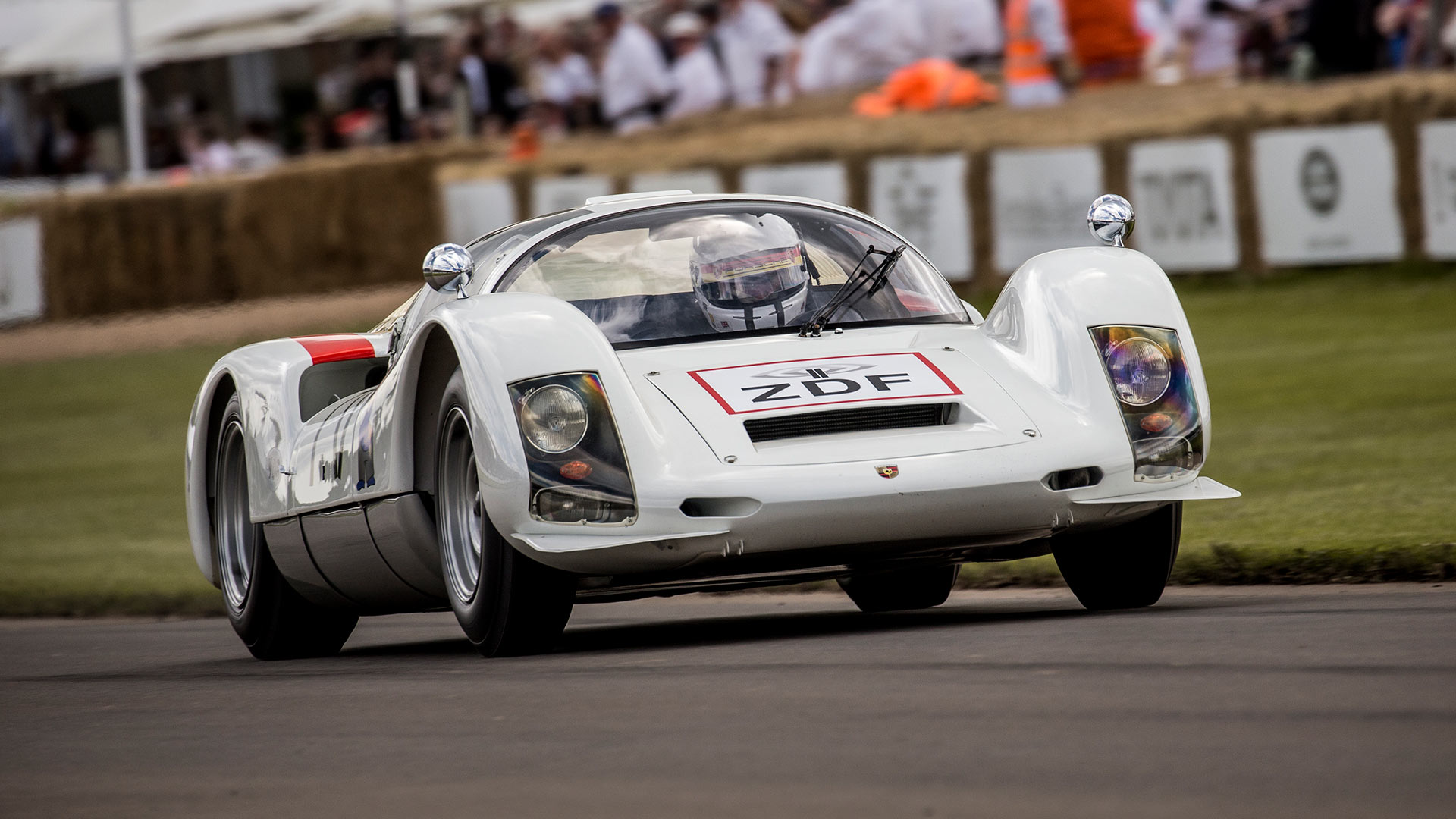
Although Ford and Ferrari were the main contenders in 1966, Porsche would also enter a small army of 906 racers at Le Mans.
A total of six 906 machines would contest the race, including three of the brand-new LH ‘lang heck’ prototype versions. Recent victory on the Targa Florio showed the potential of the Porsche.
Strength in numbers
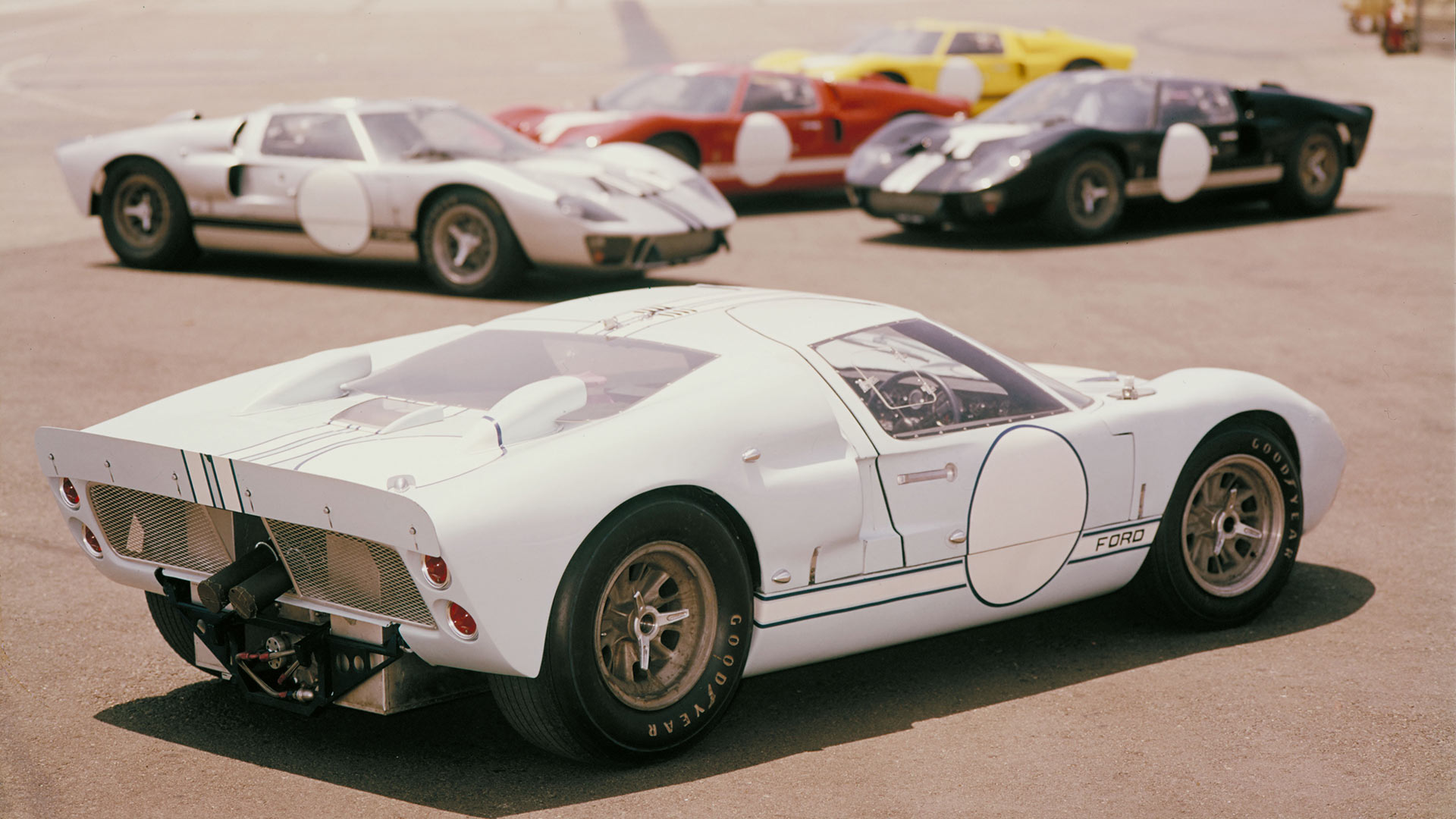
Keen to beat Ferrari at its own game, Ford entered a total of 15 Mk II GT40s for Le Mans in 1966. Eight were accepted for the race, with Shelby American running three cars. Holman-Moody also fielded another trio, whilst Alan Mann Racing would be responsible for the final two Mk II machines.
Qualifying demonstrated the performance of the GT40 Mk II, with the top four places all taken by Fords. With all eight GT40s inside the top 12, the strategy of total domination looked to be working.
Drama on the road to tomorrow
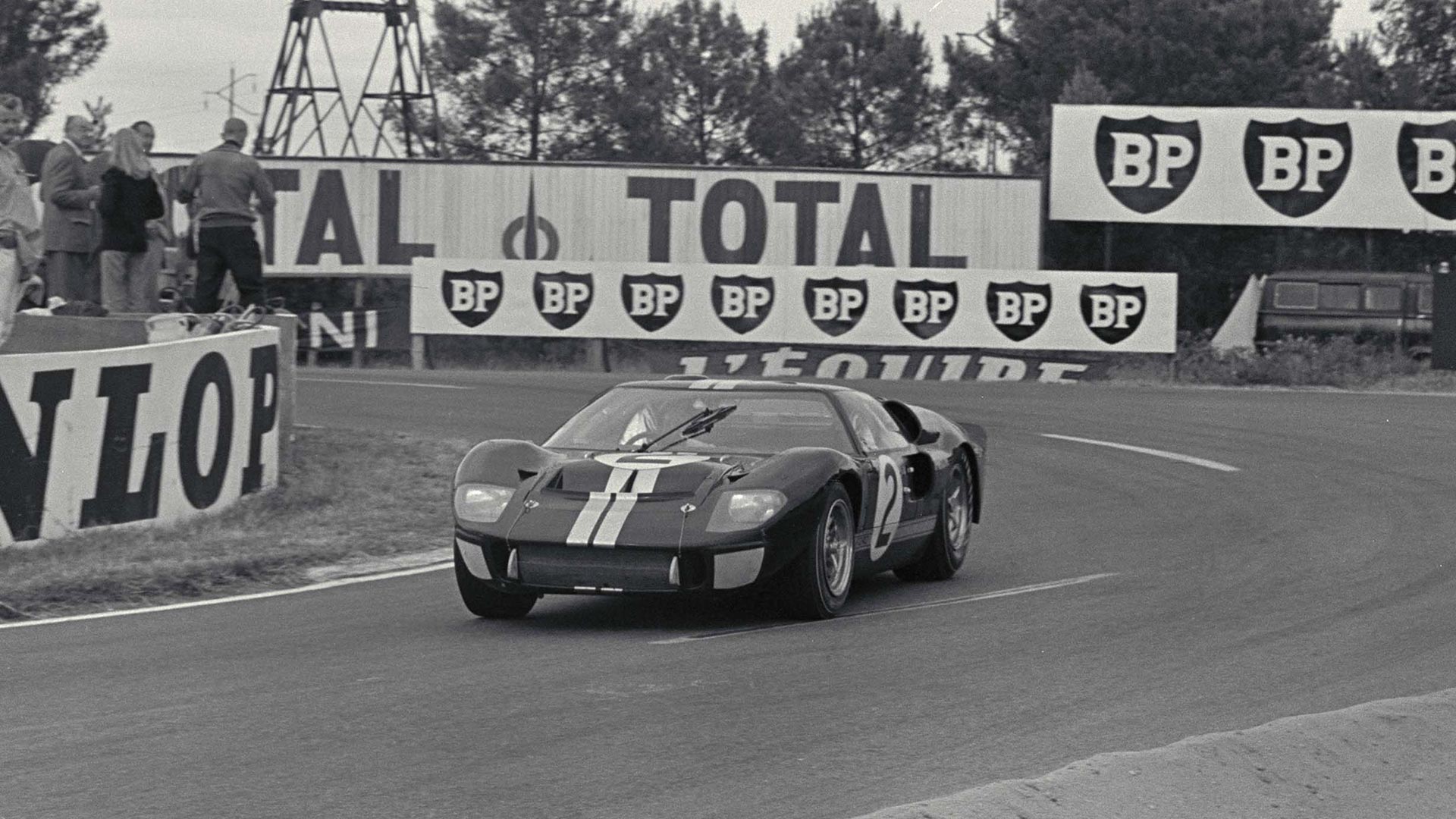
Ratcheting up the pressure on the Ford teams was Henry Ford II, acting as official starter for Le Mans in 1966. After the first lap his cars were in the lead, but the coming hours would see tense battle between Ford and Ferrari.
Overnight rain dampened the performance advantage of the big V8 engine in the Fords. However, the Ferrari prototypes began to suffer from overheating, dropping them out of contention.
Controversial photo finish for the win
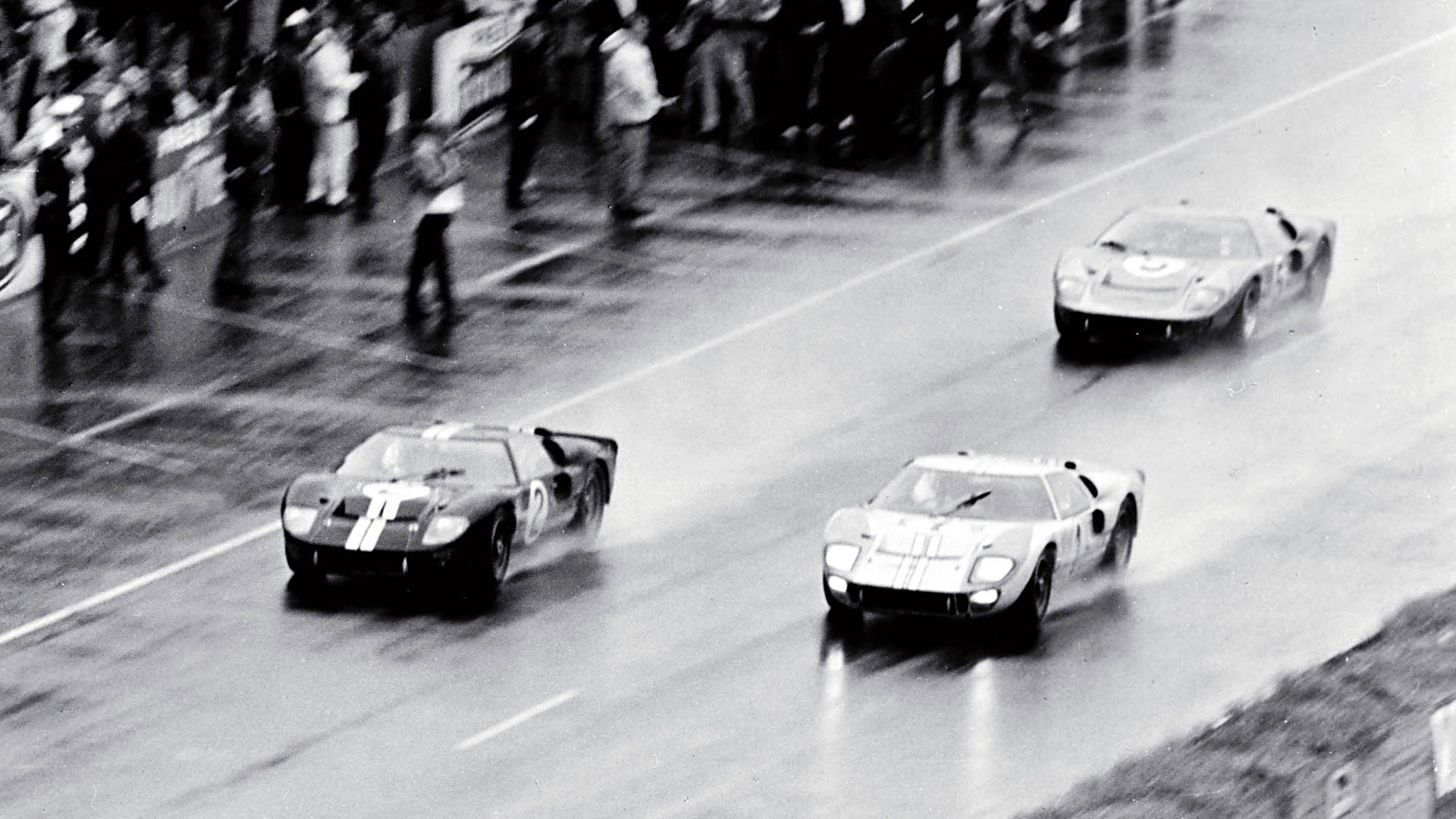
By halfway through the race, Ford MK IIs occupied the top four positions, with Mk I GT40s occupying 5th and 6th. Yet even then, victory was far from secure. The no.3 Mk II, driven by Dan Gurney, blew a head gasket from racing too hard with the no.1 car of Ken Miles and Denny Hulme.
By late morning Mk II GT40s occupied the top three positions, and Ford Racing director Leo Bebbe attempted to engineer a dead heat at the end of the race. Ken Miles was told to slow down to allow the no.2 car of Bruce McLaren and Chris Amon to catch up.
Miles was reported to be unhappy with the contrived photo finish, and lifted off just as the cars reached the finish line. This handed the McLaren/Amon car victory, with Fords filling the other podium places.
Mission accomplished for Ford at Le Mans
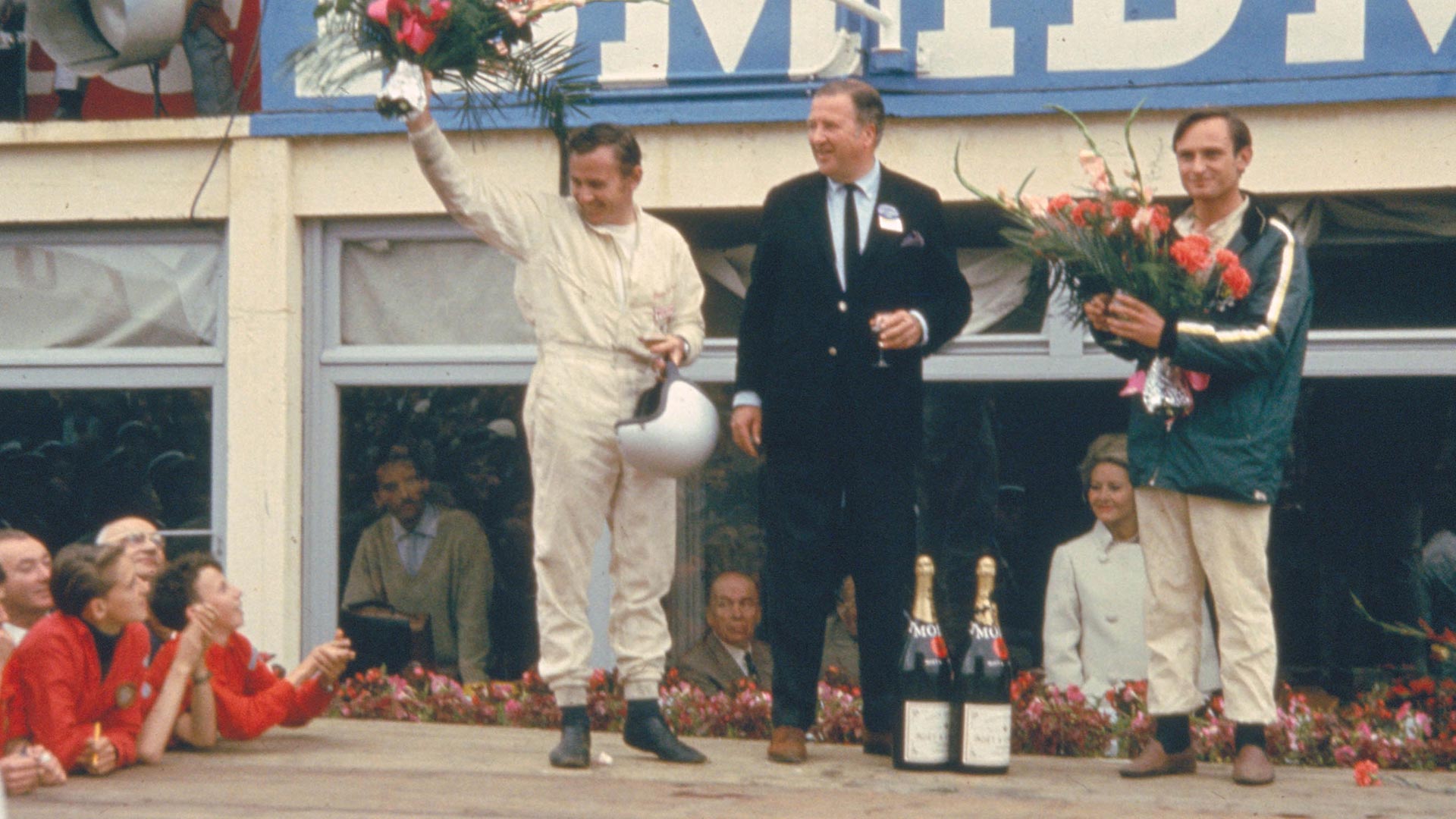
In just three years Henry Ford II had achieved his goal of beating Ferrari at Le Mans. The Italian company would never take an outright win at the French event again, with the Blue Oval ready to keep coming back.
Ford would go on to claim the P2 category of the 1966 World Sportscar Championship, further cementing its dominance.
1967 Ford GT40 Mk III road car
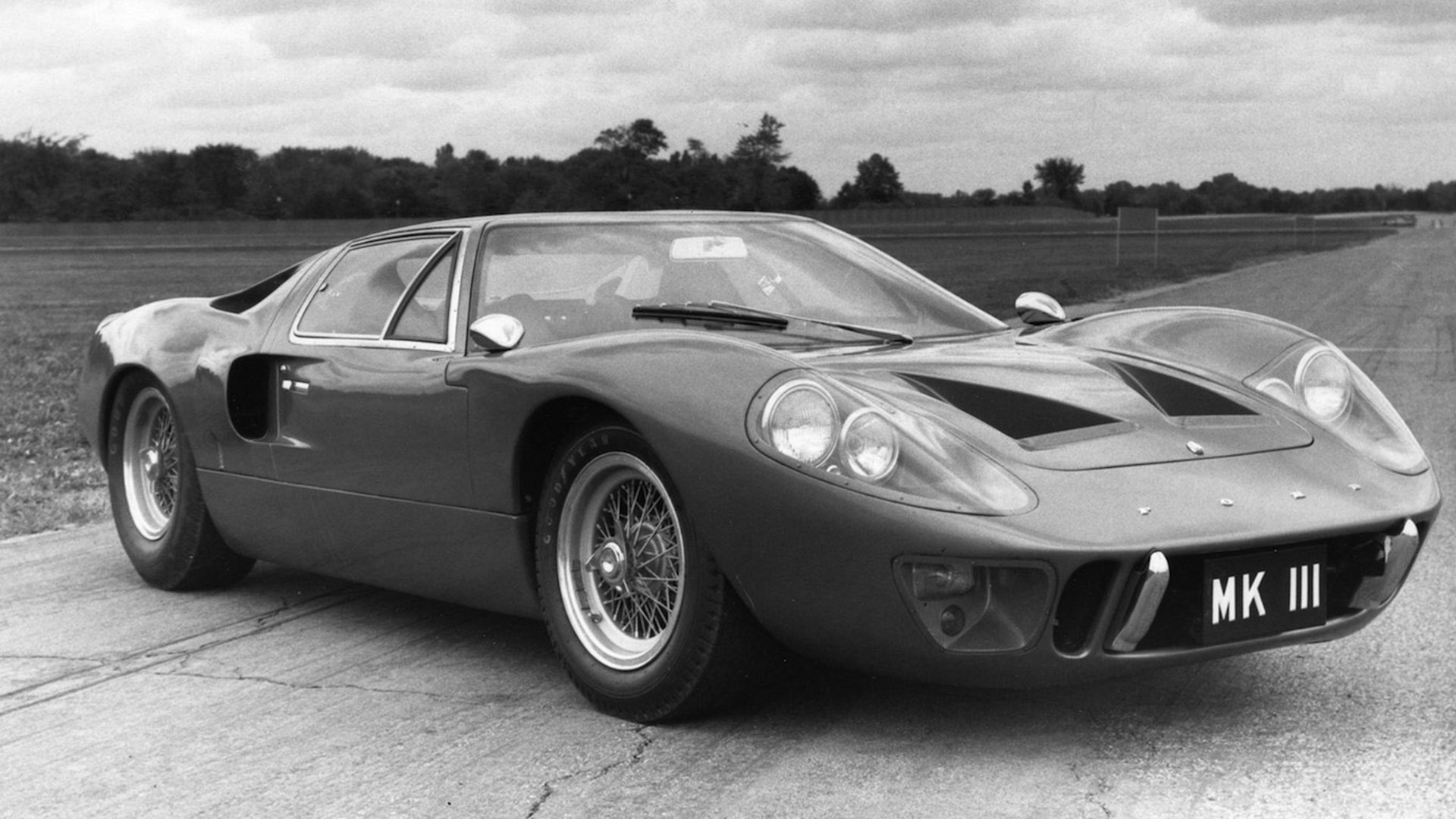
With the GT40 race car cleaning up on track, a bespoke road-going version was now being readied for the street. Unlike previous road-legal GT40s, the Mk III had specific features to make it suited to the highway.
An elongated rear gave access to a luggage compartment, whilst the bumpers gained small chrome overriders. Unlike the race cars, there was no bigger engine, with power still coming from the 289 cubic inch (4.2-litre) V8. Only seven examples of the Mk III were built, with just three in right-hand drive.
Tragedy of the 1967 Ford GT40 J-car
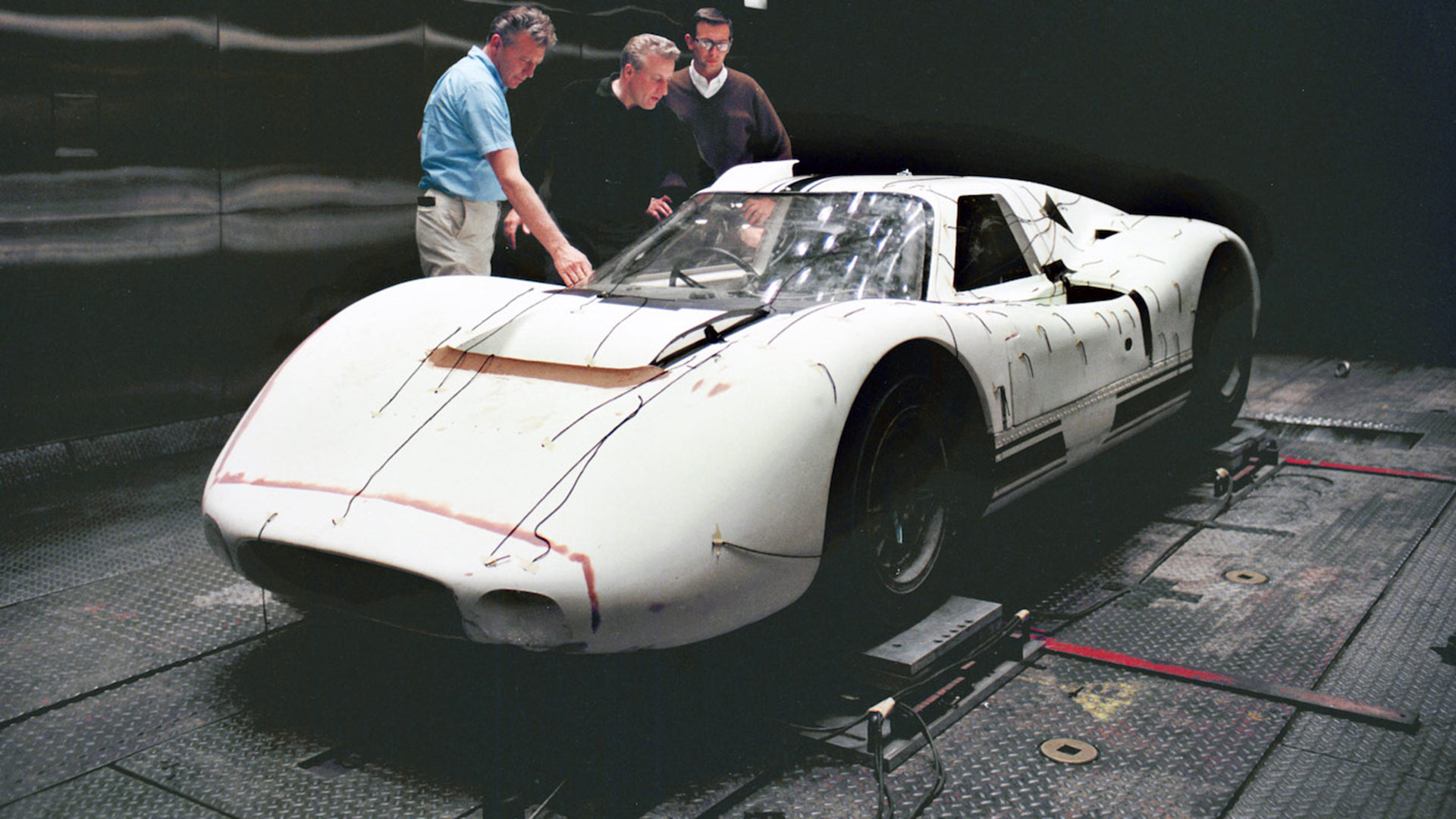
Despite the success of the Mk II GT40, Ford didn’t rest on its laurels and set about developing the car even further. With power now sufficient, experimental aerodynamic changes to maximise the muscle were made throughout 1966 and 1967, along with a lightened chassis.
Tragedy struck during a test session, when Ken Miles was killed in a high-speed accident at Riverside International Raceway, with blame laid at the lack of downforce from the aero modifications.
1967 Ford GT40 Mk IV
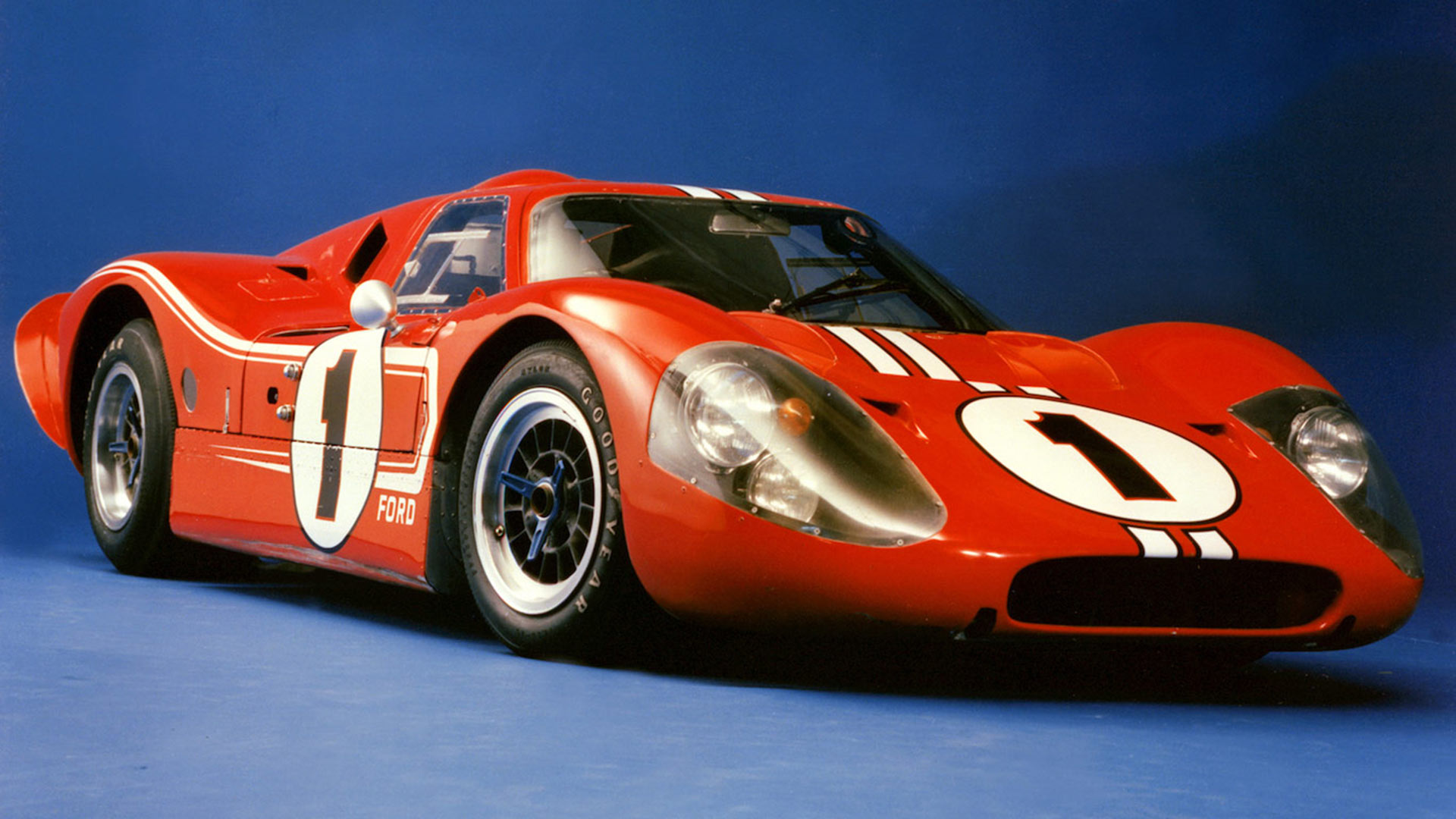
The experimental flat-topped roof of the J-car was dropped, but the resulting Mk IV still managed to look distinctive. Lengthened and streamlined to achieve a higher top speed, the Mk IV also featured the lightened chassis.
The death of Ken Miles was not in vain, with a high-strength roll cage also being fitted. Although the Mk IV only entered two races, it claimed a 100% success rate with victories in the 1967 12 Hours of Sebring and 24 Hours of Le Mans.
1968 Ford GT40 Mk I Le Mans
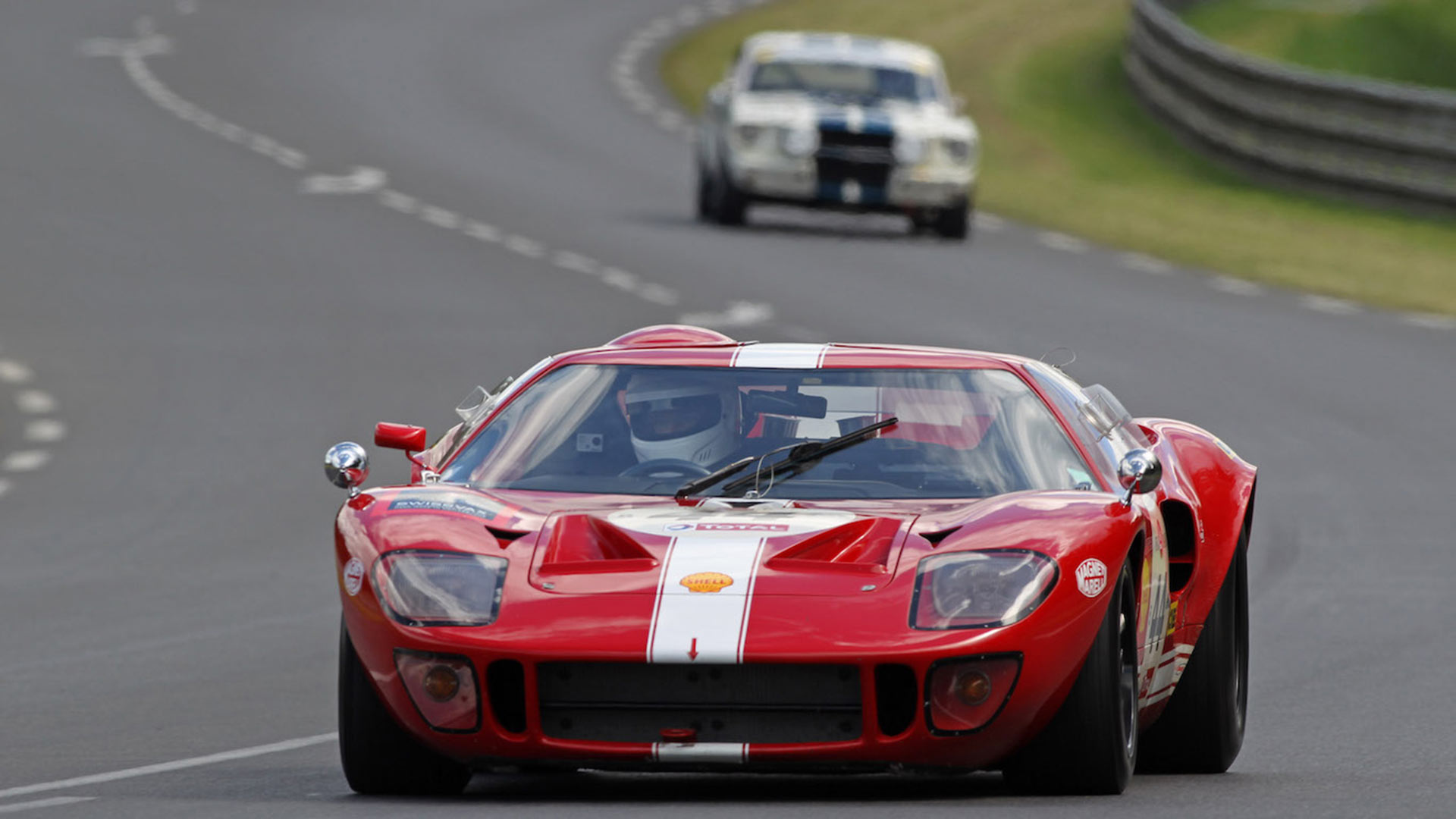
Concerned by the high speeds seen during the 1967 24 Hours of Le Mans, for 1968 engine sizes were capped at 5.0 litres for cars in the Sports class by the FIA. This ruled out the Mk II and Mk IV versions of the GT40, but meant the earlier, smaller-engined Mk I was still eligible.
Now with reliability on its side, the Mk I took overall victory in 1968 driven by Pedro Rodriguez and Lucien Bianchi. It would repeat the same feat in 1969 with Jackie Ickx and Jackie Oliver driving, taking the total number of outright Le Mans wins for the GT40 to four in a row.
Ford GT wins 2016 Le Mans 24 Hours
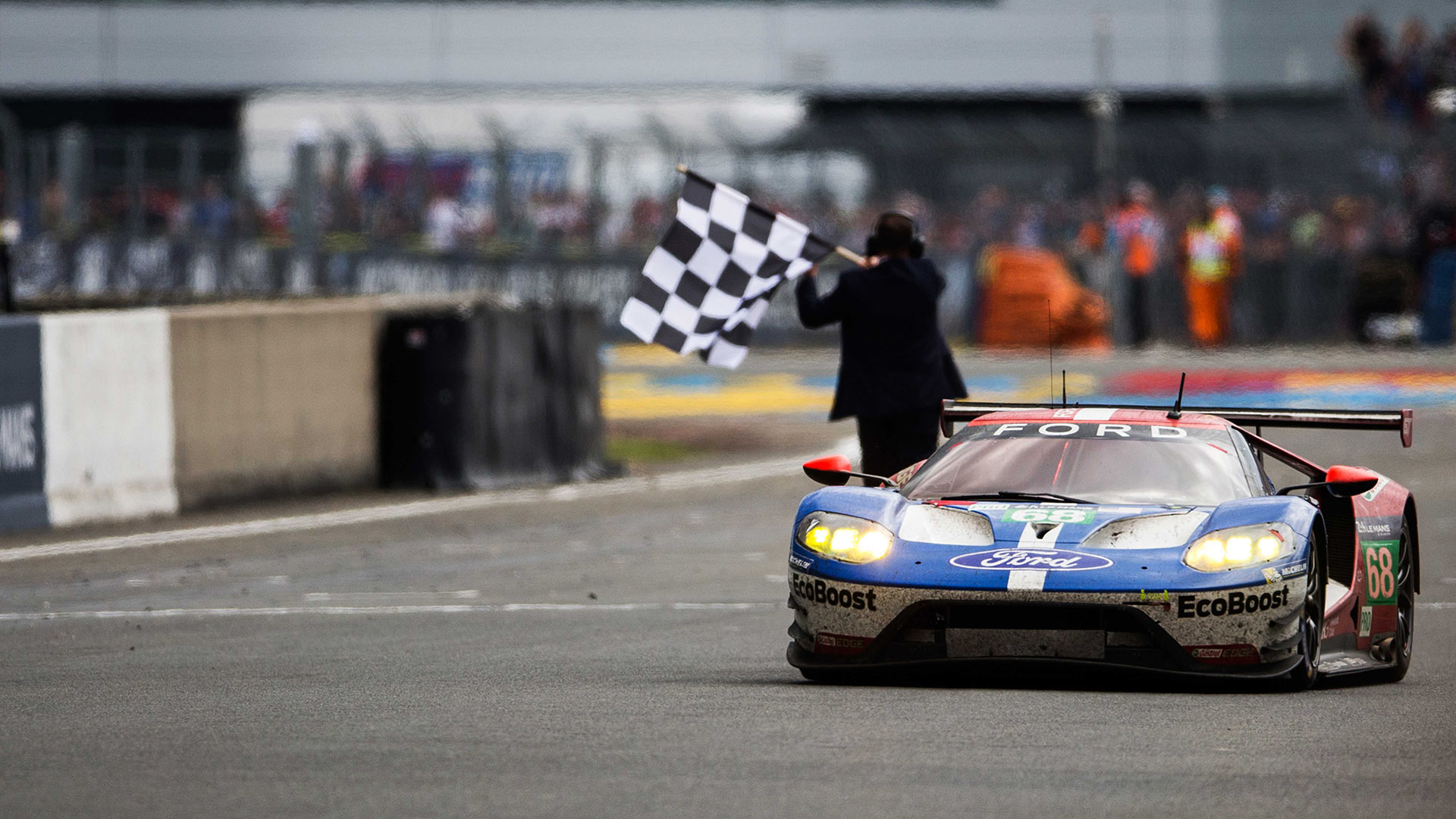
Fast forward several decades and Ford found once again on the top step of the podium at Le Mans.
Living up to the reputation of its GT40 predecessors, the new GT race car, ran by Chip Ganassi Racing, took an impressive victory at Le Mans in 2016 in the LMGTE Pro class. Coming exactly 50 years after the first Le Mans win for the GT40, Ford was unsurprisingly ecstatic about the result.
2017 Ford GT ‘66 Heritage Edition
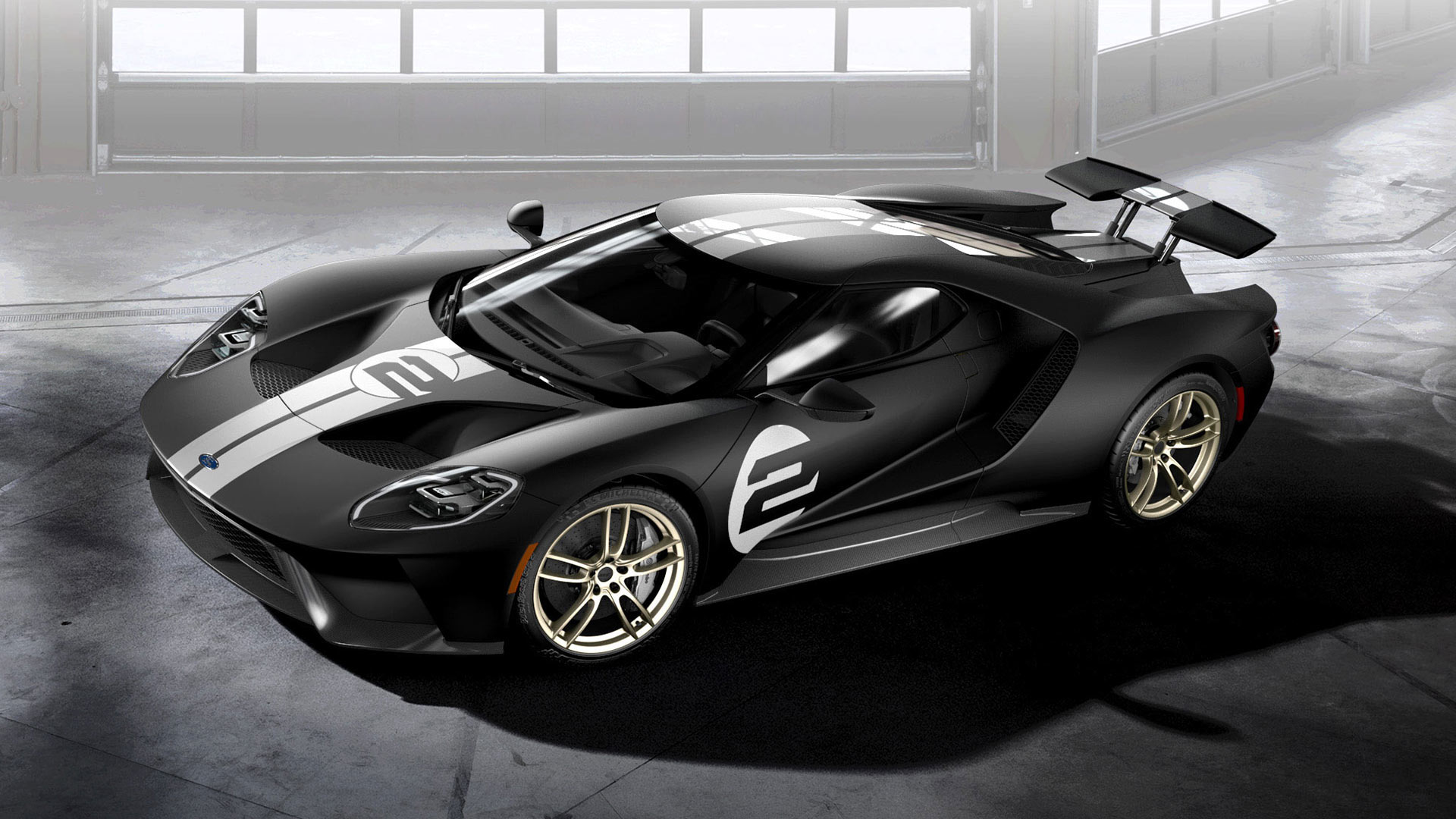
To mark the Le Mans wins 50th anniversary, Ford also announced a special edition of a car that hadn’t even actually started production yet. Remembering that historic 1-2-3 victory at the Circuit du Sarthe in 1966, the Heritage Edition featured a colour scheme inspired by the no.2 GT40 driven by Chris Amon and Bruce McLaren.
A Shadow Black exterior – available in either gloss or matte finish – was combined with silver stripes and alloy wheels in gold satin. Inside is a leather-wrapped steering wheel, along with extra carbon fibre and a limited edition plaque.
Ford captures the Le Mans-winning GT40 in Lego
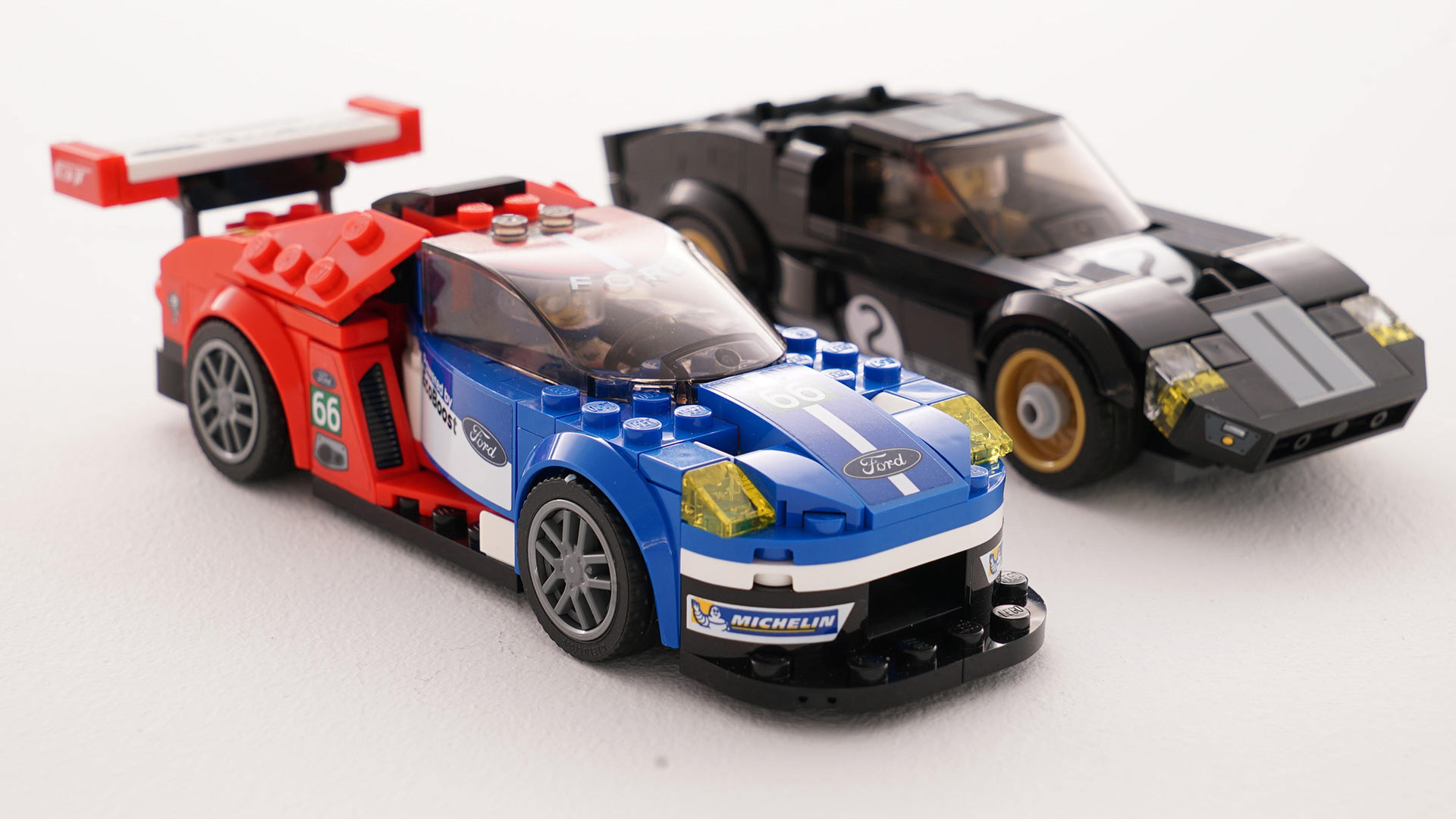
Along with the modern interpretation of the successful 1966 GT40, Ford also created a miniature Lego version. This had the benefit of being considerably cheaper than the full-size GT supercar, and produced in much larger numbers.
Paired with a Lego version of the 2016 Le Mans-winning Ford GT, the classic 1966 GT40 also comes with a retro driver minifigure. Fans can decide for themselves whether they want it to be Chris Amon or Bruce McLaren.
2019 Ford at Le Mans with historic liveries
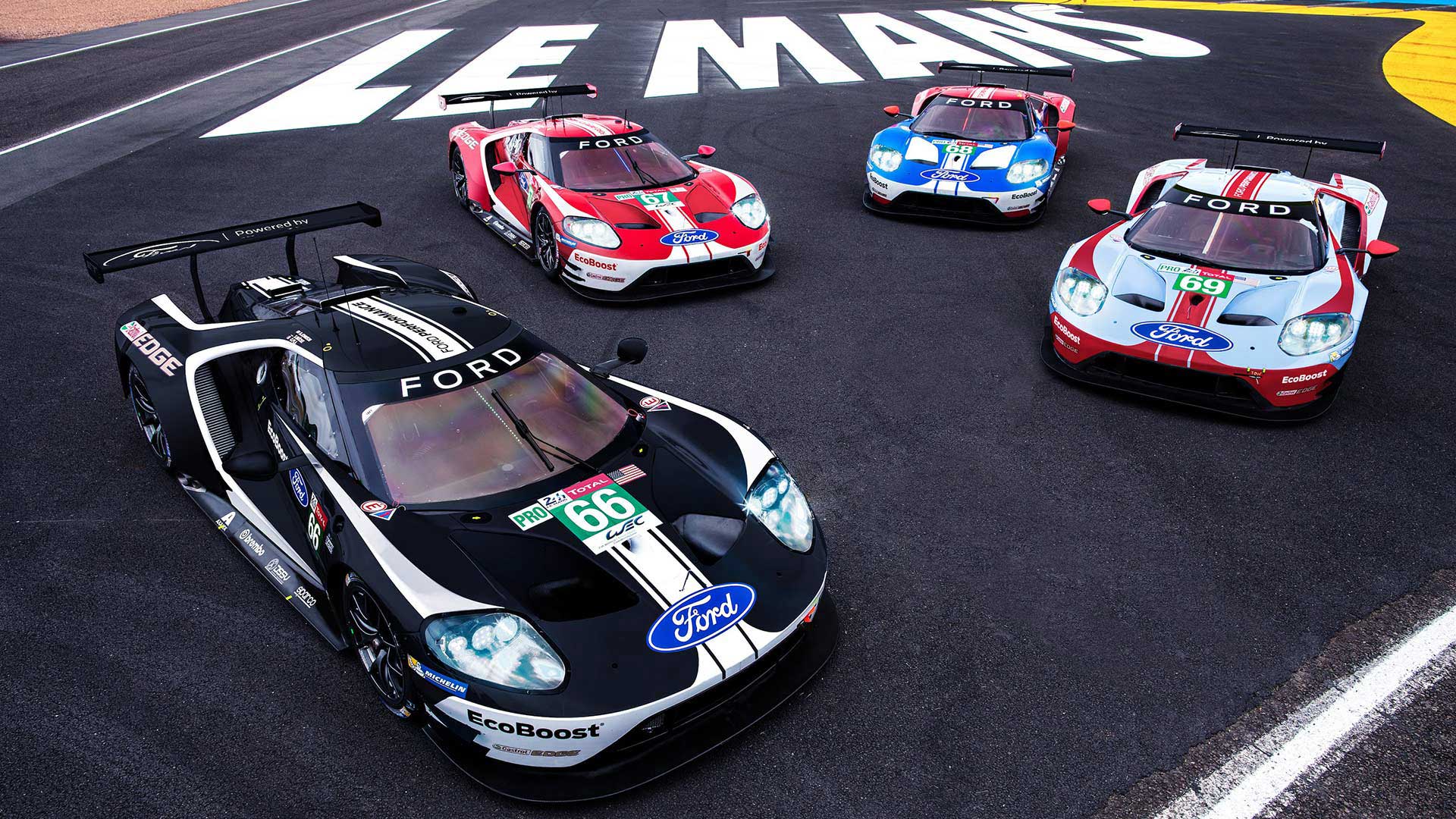
Ford contested the Le Mans 24 Hour race again each year until 2019, which marked the final year of competition for the GT racer. However, the Chip Ganassi Team would be unable to replicate the success seen in 2016.
Not even racing with retro-inspired liveries for the 2019 edition of the 24 Hours race was enough to help clinch LMGTE Pro victory. Ford would manage fourth in class, with Ferrari taking first place on the podium.
Sunset on the Ford GT Le Mans project

In fact, Ferrari has continued to dominate the World GT Manufacturers’ Championship since 2012, taking five titles in seven seasons. It means that more than 55 years after Henry Ford II declared war on the Ferrari at Le Mans, the battle is still seemingly far from over.
The scheduled cinematic release date for ‘Ford v Ferrari’ is now November 15th 2019. It means only a few more months of waiting for fans to witness the recreation of this special chapter in motorsport history.